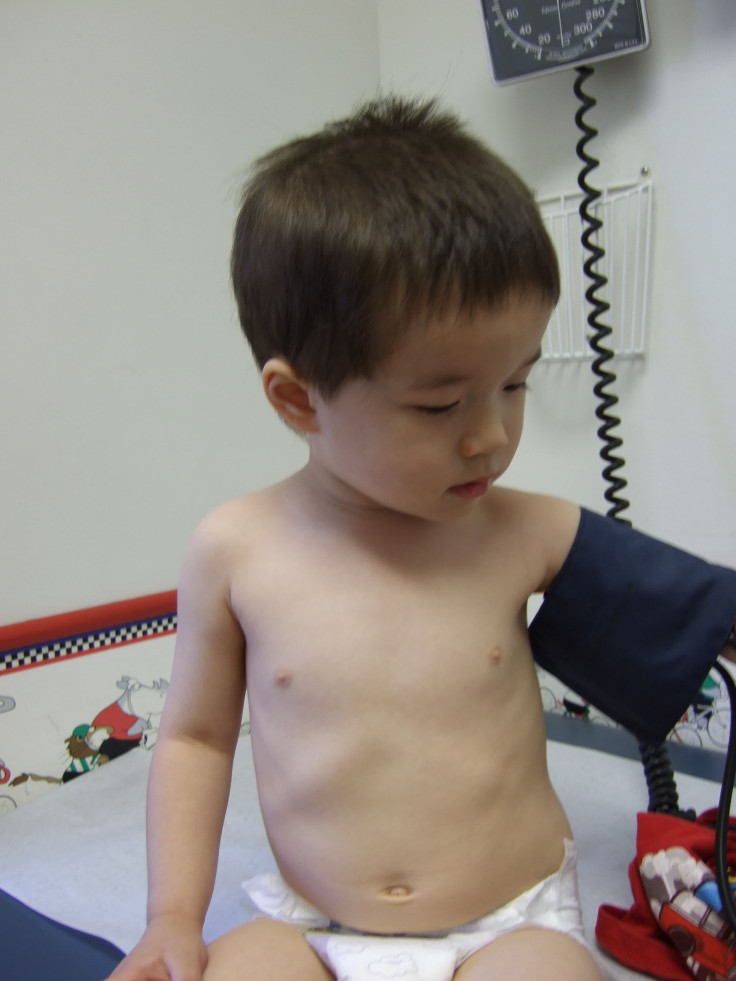Kids' Blood Pressure On The Rise: Is Obesity Or Too Much Salt To Blame?

In a mere 13 years, the percentage of American children and adolescents, aged eight to 17, who have high blood pressure has risen to 27 percent. Researchers from Harvard Medical School, Brigham and Women's Hospital, and other institutions funded by the National Institute of Health used two large national surveys to compare the blood pressure data of thousands of children.
The two governmental surveys used were National Health and Nutrition Examination Surveys, which provided the health and nutritional status of adults and children in the United States during the period 1988 to 1994, and 1999 to 2008. The first time period revealed 15.8 percent of boys and 8.2 percent of girls could be classified as having elevated blood pressure, and by the next time period, 19.2 percent boys and 12.6 percent of girls suffered from high blood pressure, which is a risk factor for cardiovascular disease, organ damage, heart attack, and stroke.
In a comparison that looked at the groups with the highest and lowest salt intake, those with increased salt intake had a significant association with elevated systolic blood pressure, but not diastolic blood pressure, the study's authors wrote in the journal Hypertension.
Systolic blood pressure measures the amount of pressure exerted on the arteries and blood vessels when the heart is beating, while diastolic measures the heart in a relaxed state. A normal systolic measurement in children ranges from 95 to 100 mmHg, while in adults it ranges from 90 to 120. The boys' blood pressure rose from 106.1 to 107.8 mmHg and girls rose from 102.3 to 104.9 mmHg.
"There's been very little evidence to support an effect of salt on blood pressure in children, while in adults, the relationship between salt and blood pressure is well substantiated," said Dr. Bonita Falkner, one of the study's researchers and professor of medicine and pediatrics at Thomas Jefferson University.
The increased risk of high blood pressure wasn't the only result from the survey that has researchers worried. The study also found an increase in children's weight, waistline, and sodium consumption. The researchers look to the changes in American's food supply and the growing presence of processed foods in regular diets as the reason for the surprising increase in U.S. children's dietary salt intake.
According to Falkner, up to 80 percent of excess salt intake comes directly from processed foods, "It's hidden. You can't really taste it or feel it," she said.
Is salt or obesity the culprit?
However, there is a stronger association between body mass index and blood pressure than there is with sodium, according to David Katz, director of the Yale University Prevention Research Center.
In the past 30 years, obesity has more than doubled in children and tripled in adolescents, and according to the Centers for Disease Control and Prevention (CDC), 70 percent of five to 17 year olds have at least one risk factor for cardiovascular disease.
"As obesity rates rise in our kids, so, too, does their blood pressure," said Katz. "If we needed another reason to take action, this study provides one. As our kids' blood pressure rises, so does the pressure on us all to do what's necessary to put a stop to these trends."
In a recent report commissioned by the CDC, "Sodium Intake In Populations: Assessment of Evidence," researchers found that reducing salt intake isn't as important as once thought. Instead, after studying 28,800 subjects, they discovered that a healthy medium of one-and-a-half to three tablespoons per day, or 2,300 milligrams, will lower associated risks, such as heart attack and stroke, but anything below that won't provide many health benefits.
The researchers found 70 to 80 percent of children were above their recommended daily intake (RDI) for total fat, saturated fat, and protein. And, 80 percent of children were above the RDI for sodium intake.
"It's all nutritionally related and activity related," Dr. Patrick McBride, a cardiologist at the University of Wisconsin School of Medicine and Public Health, told NBC News. McBride has had a heart disease prevention practice for 30 years and is surprised by the high blood pressure and cholesterol he's been seeing in children more recently. "Children are being parked in front of screens, videos, electronics and then consuming high-caloric density foods."
McBride said that he is going to be more diligent about checking blood pressure in children, and if the classic diet and exercise don't work, he will consider prescribing blood pressure-lowering drugs.
Source: Cook N, Daniels S, Falkner B, Rosner B. Childhood blood pressure trends and risk factors for high blood pressure. Hypertension. 2013
Published by Medicaldaily.com



























